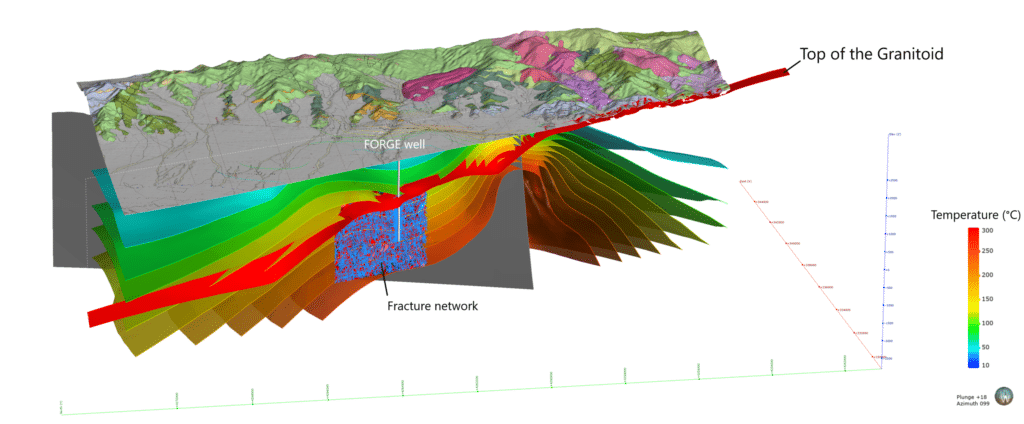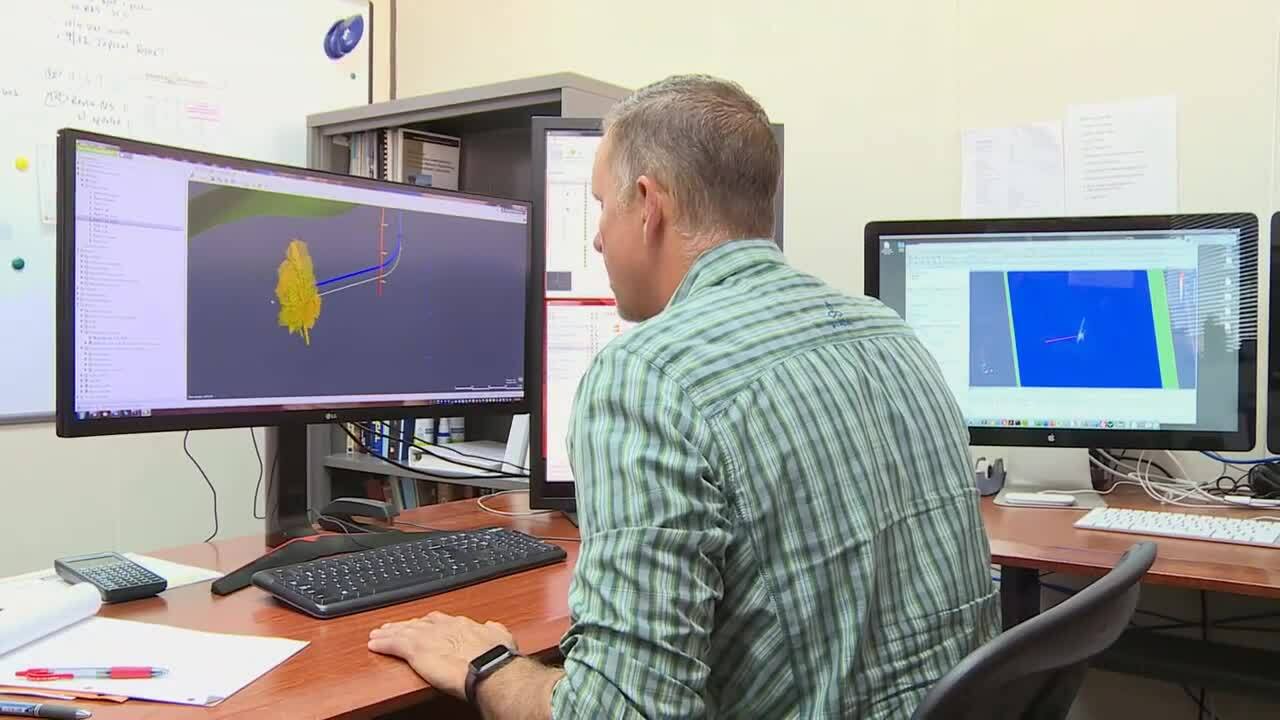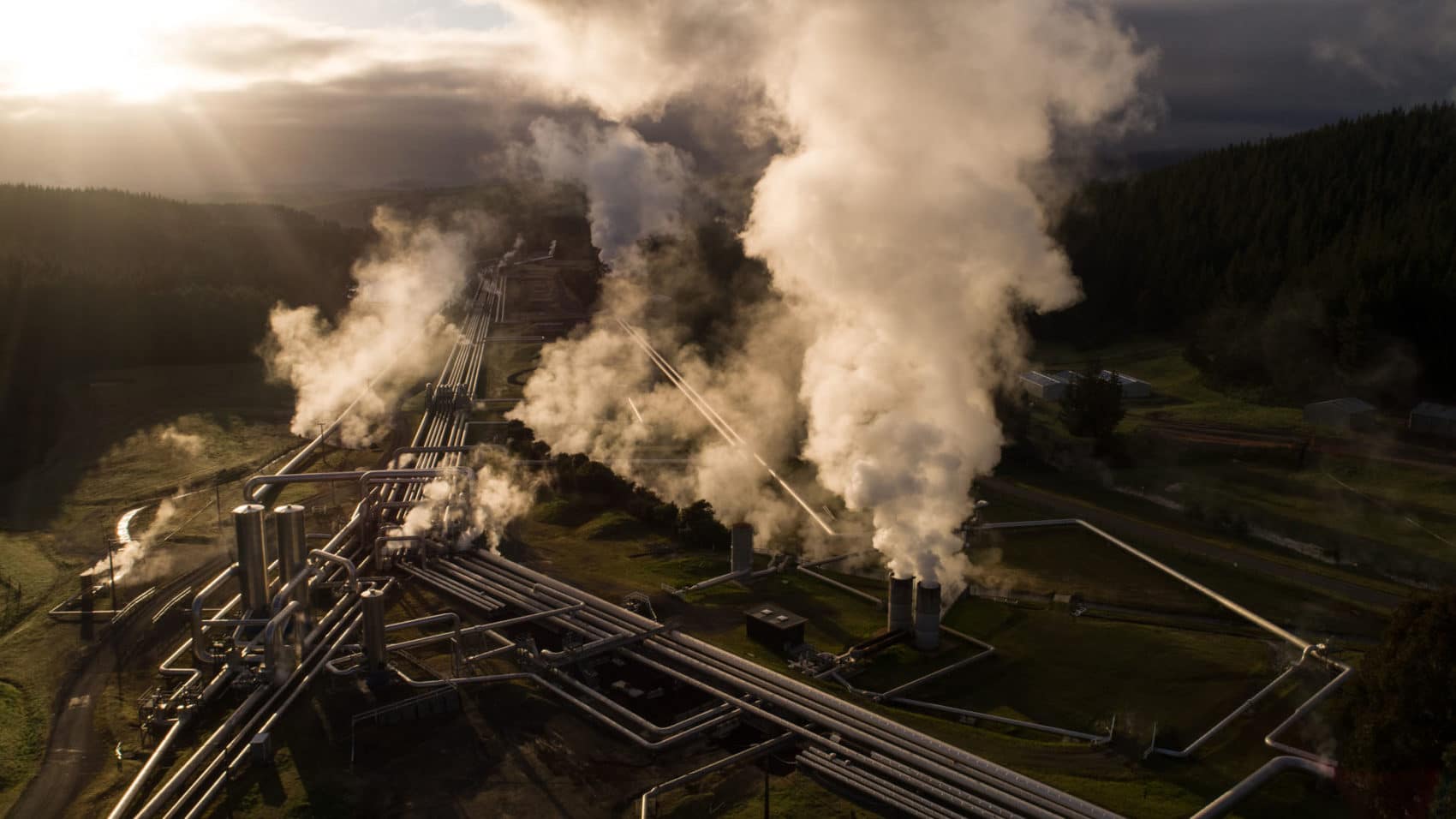The Frontier Observatory for Research in Geothermal Energy (Forge), is a project designed to test research, new tools, and technology.
In November 2018, we kicked off a five-year partnership with the Utah FORGE (Frontier Observatory for Research in Geothermal Energy) project at the University of Utah. The project is sponsored by the U.S. Department of Energy (DOE), with the aim to provide research on enhanced geothermal systems (EGS).
Geothermal energy comes from the heat present in the earth’s crust, which originates from the hot, molten centre of the earth. This heat can reach shallow depths or the earth’s surface in areas where the crust is thin or fractured, or where there is significant volcanic activity (generally along tectonic plate boundaries like the Ring of Fire). We see proof of its power in spectacular natural displays like volcanoes, geysers and hot springs.
Some subsurface geological formations are permeable, due to structural features like faults or the rock characteristics, which means liquids or gases can pass through them. In these permeable environments, this natural thermal energy can be transferred intro underground fluids and create high-temperature geothermal reservoirs.
Currently, drilling into these deep reservoirs (2 km – 5 km) is the only way the United States can commercially harness geothermal energy for power generation. However, these sites are limited and many of them have already been tapped into.
But there’s another potential commercial source of geothermal energy. In subsurface regions where there’s low permeability, you’ll find hot, dry rock – as geothermal reservoirs cannot form. Scientists and researchers have been wondering how they can turn that energy into cheap, reliable power.
That’s the idea behind EGS, a technique that artificially enhances rock permeability in those subsurface environments. (You can learn more about this process from the United States Office of Energy Efficiency & Renewable Energy.)
The DOE kicked-off the FORGE project in 2014, when they announced a funding opportunity for the FORGE field research laboratory – which would be a dedicated site for cutting-edge EGS testing. Proposals for potential lab locations were submitted to the DOE from American Universities across the country. The winning site is located just outside of Milford, Utah and was proposed by the University of Utah (thus creating the ‘Utah FORGE’ project).
The DOE has committed $140 million over five years to site development and research. This research is complimented by other EGS projects currently underway, including the EGS Collab project, which we are also supporting.
Seequent has provided significant cost sharing (over $300,000 USD) of our products and also the support of our technical staff to the Utah FORGE project team. The team’s first order of business is to use Seequent products to visualise the subsurface at the FORGE Milford site.
“At the site near Milford, there‘s commercial geothermal development nearby. So, it’s had research since the 1960s. There’s been a lot of wells drilled in the vicinity- the beauty of that is there’s tons of data,” said Robert. “But it’s all in different datasets. We have been working on getting it all in one place. Then we can start to understand the geologic structure, the heat flow, the stress and permeability relationships at the site.”

Aerial photo of the FORGE Milford Site
They’ve chosen to reconcile all this data in Leapfrog Geothermal, our 3D modelling solution for the geothermal industry. They’re also using Central, our model management solution for visualising, tracking and managing geological data from a centralised, auditable environment. You can interact with the FORGE model below, using our web visualisation tool View:
“We have people all over the country working on this project,” said Robert. “What’s key for us is having the ability to integrate these geoscientists and engineers, by getting all their input and making sure they’re working off the same model.”
“When I saw the Central interface, I knew we had to use it- simply because we have such a big team and so many changes,” said Robert. “One person can’t be a bottleneck for keeping all these things up to date. We need to have control of understanding where we are.”
It’s vital that they interpret an accurate subsurface model, as this will affect the EGS research. And this is important, as EGS has the potential to provide clean, cheap reliable energy for generations to come.

“With EGS, we could have access to a few hundred to a thousand gigawatts of geothermal resources,” Robert said. “Even if we could only tap into 25% of that, we’re talking twenties to hundreds of gigawatts of electricity, and that can make a huge difference.”
To put that in perspective, 100 GWs could power approximately 100,000,000 houses in the USA.
“I’ve been doing this stuff for 20-something years. And I wonder what kind of legacy we’re going to leave the next generation,” said Robert. “I think our team could drive scientific discovery, in a way that it could be beneficial in the near term. It’s not going to be easy. We will make mistakes I’m sure. But I’m really excited to see what happens.”
Duration
4 min

See more on demand videos
VideosLearn more about Leapfrog Geothermal
Learn more
Video Transcript
The video transcript gets copy and pasted here





